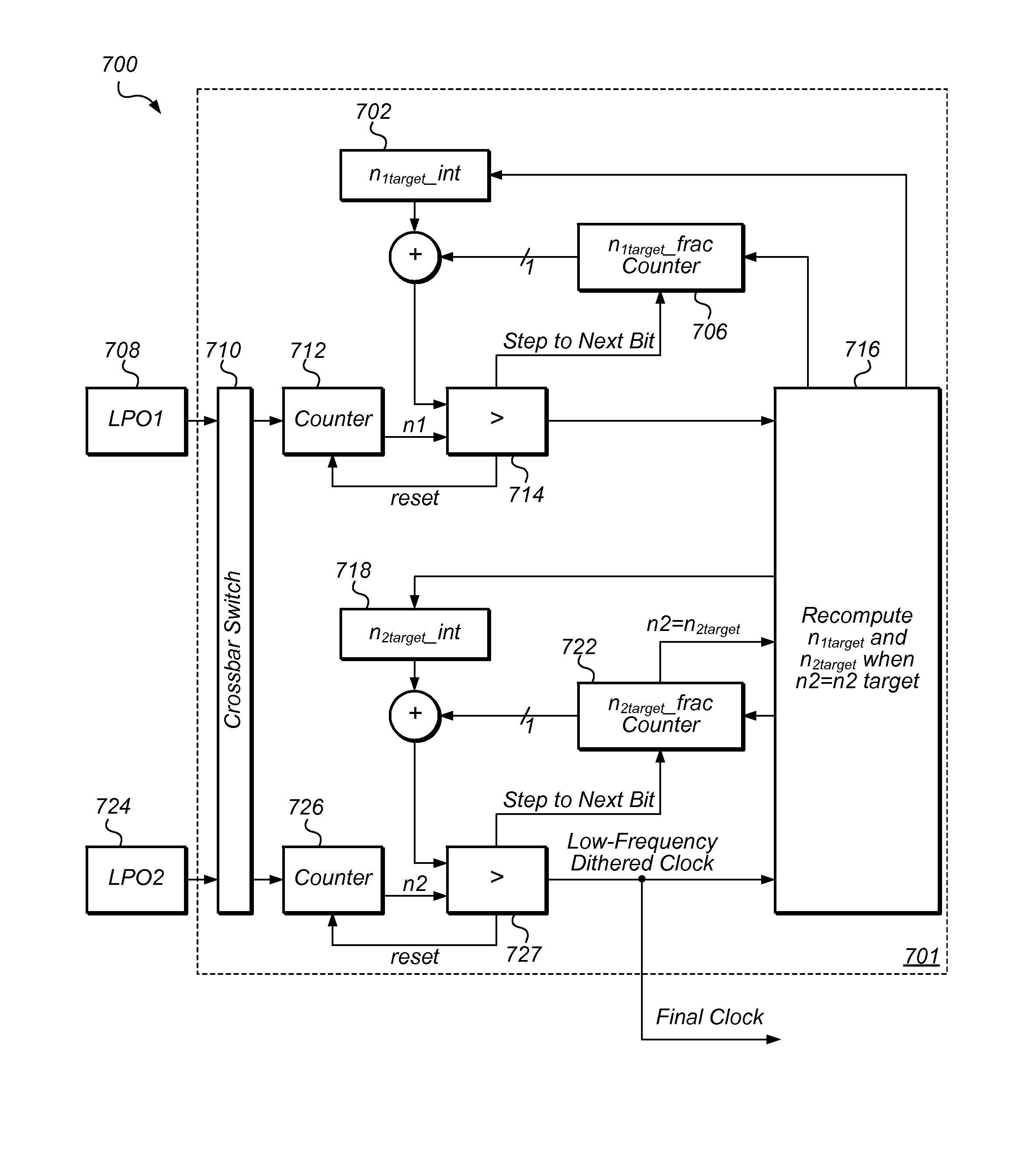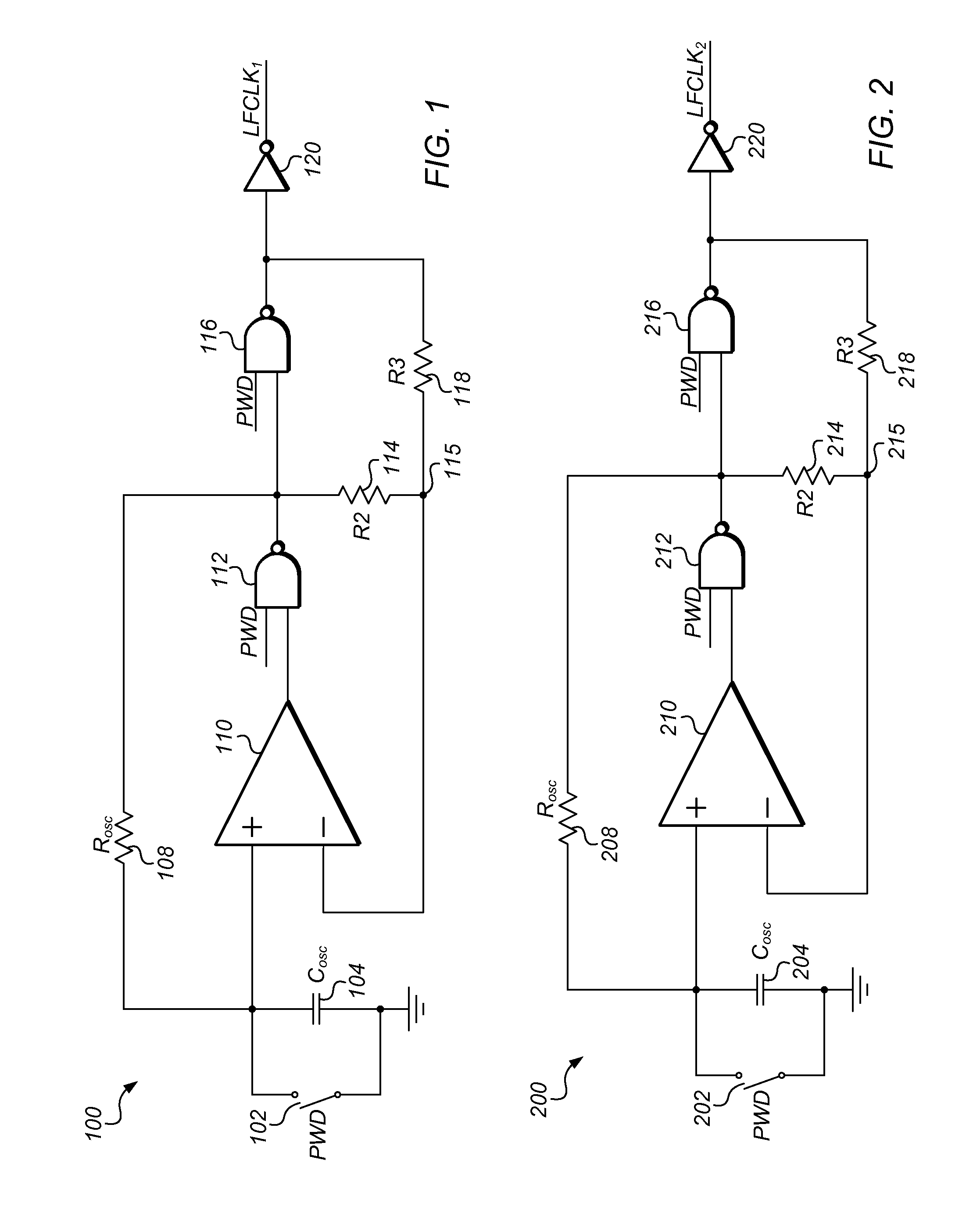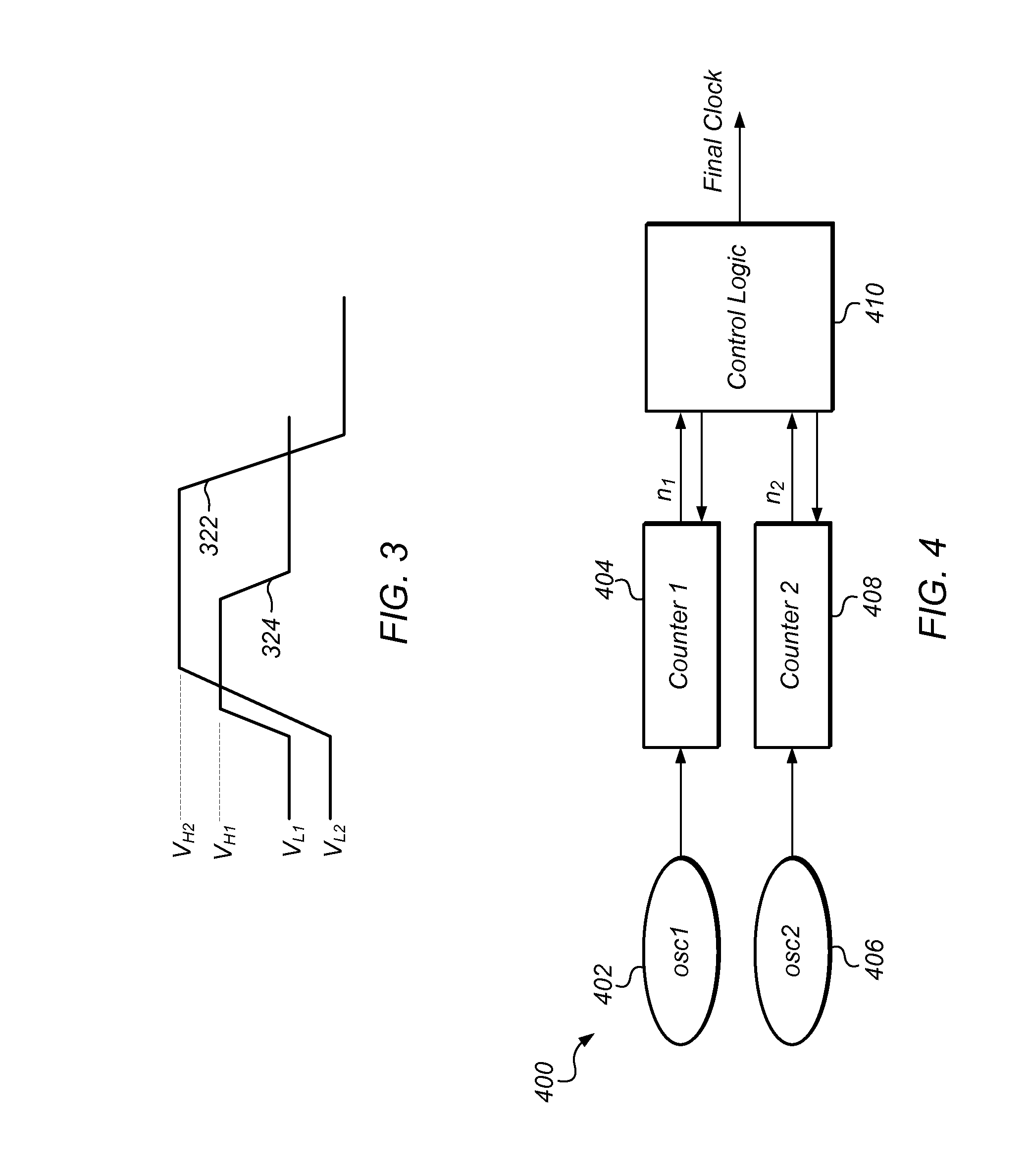Dual self-calibrating low-power oscillator system and operation
a low-power oscillator and self-calibration technology, applied in the field of oscillator design, can solve the problems of increasing the cost, affecting the behavior of such on-chip oscillators, and generally difficult to achieve the 250 ppm goal with a single oscillator, so as to achieve the effect of less power and reduced power consumption
- Summary
- Abstract
- Description
- Claims
- Application Information
AI Technical Summary
Benefits of technology
Problems solved by technology
Method used
Image
Examples
Embodiment Construction
[0022]In various embodiments, two low-frequency / low-power oscillators configured in a two-oscillator system may be used for tracking time, for example during sleep mode of a system or an integrated circuit (chip). The two-oscillator system may be operated during normal mode to indicate to the chip when to wake up, and may also be operated to provide timing in case the chip wakes up due to an external interrupt. In some embodiments, the two-oscillator system may also provide a clock—of possibly different frequency than the frequency during normal operation—during sleep mode. The maximum allowed frequency drift of the oscillators over time may be determined by the maximum allowed time-error during the wake up time.
[0023]One possible design of a low power oscillator (LPO) 100 is shown in FIG. 1. LPO 100 may be manufactured using a specified process technology, which may be a 0.13 μm technology process in one set of embodiments. In another set of embodiments, LPO 100 may be manufactured...
PUM
 Login to View More
Login to View More Abstract
Description
Claims
Application Information
 Login to View More
Login to View More - R&D
- Intellectual Property
- Life Sciences
- Materials
- Tech Scout
- Unparalleled Data Quality
- Higher Quality Content
- 60% Fewer Hallucinations
Browse by: Latest US Patents, China's latest patents, Technical Efficacy Thesaurus, Application Domain, Technology Topic, Popular Technical Reports.
© 2025 PatSnap. All rights reserved.Legal|Privacy policy|Modern Slavery Act Transparency Statement|Sitemap|About US| Contact US: help@patsnap.com



